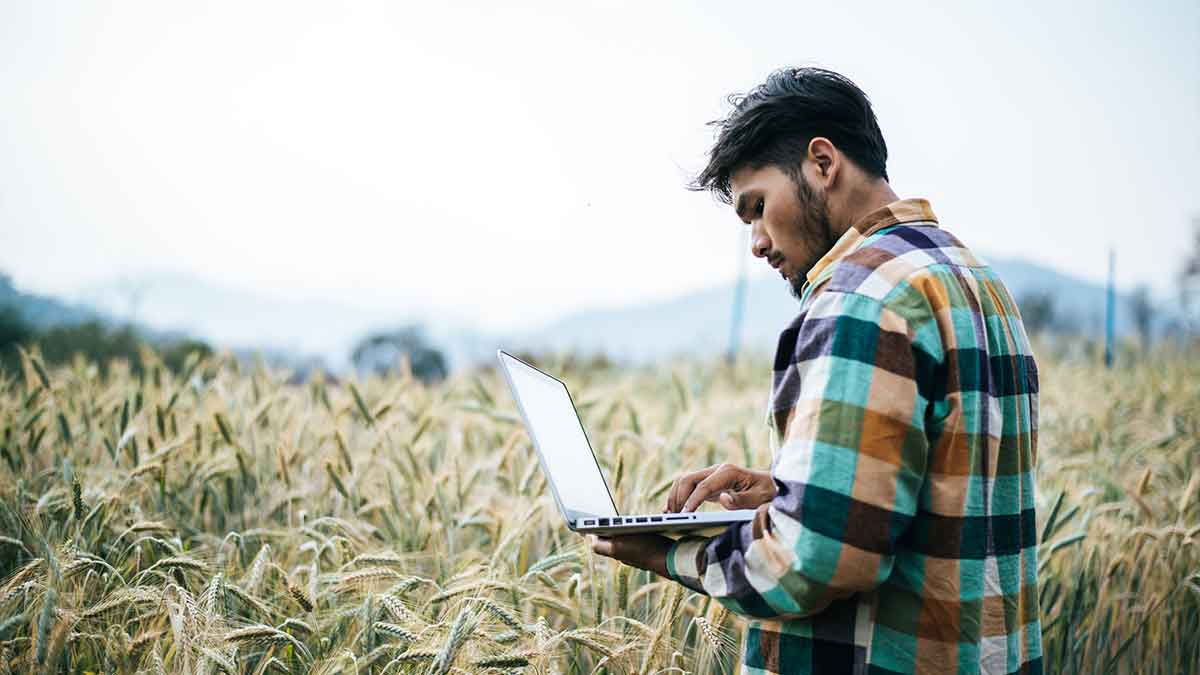There is an urgent need for smart farming technologies since, according to the UN Food and Agriculture Organization, the world will need 70% more food by 2050. With shrinking agricultural lands and the depletion of finite natural resources, it is critical to increase farm yield.
Due to a limited supply of natural resources such as fresh water and arable soil, as well as slowing yield trends for many staple crops, the problem has worsened.
The shifting structure of the agricultural workforce is another concern for the agriculture industry. Most countries have seen a decline in agricultural labor.
Due to the decline in agricultural workers, internet connectivity solutions have been implemented in farming practices to decrease the need for manual labor.
IoT: Solution for Farming Problems
IoT solutions help farmers close the supply-demand gap by ensuring high yields and profitability, as well as environmental protection.
Precision agriculture is the use of IoT technology to optimize resources for high yield crops and lower operational costs. IoT in agriculture technology includes specialized equipment, wireless connectivity, and software.
According to BI, the agriculture industry was supposed to adopt seventy-five million devices in 2020. This represents a 20% annual increase. The global smart agriculture market is expected to triple in 2025 to $15.3 billion, in comparison to just slightly more than $5 billion in 2016.
Internet of Things technology is the basis for smart farming technologies. This allows farmers and growers to reduce waste and increase productivity. With IoT technology, farmers can track everything from the amount of fertilizer that was used to the distance the vehicles covered. It also allows for efficient use of resources like water and electricity.
IoT smart agriculture solutions are systems that monitor the crop field using sensors (light, humidity, temperature, soil moisture, and crop health).
Automating the Irrigation System
Farmers can remotely monitor field conditions. They have the option to choose between automated and manual actions.
In addition, if the soil moisture drops, farmers can use sensors to turn on the irrigation system. Smart farming is more efficient than the traditional approach.
Smart Farming Benefits
IoT has the potential to transform agriculture in many ways. Some of the most important benefits of smart farming technologies are as follows:
- Smart agriculture sensors oversee data collection.
- Farmers can use the data for monitoring the overall state of the business, staff performance, and equipment efficiency. This allows for better planning of product distribution.
- The function of agricultural drones (both ground-based and aerial drones) is to improve various practices, including crop health assessment, irrigation, and crop monitoring.
- Livestock tracking.
- Geofencing.
- Farmers can use wireless IoT apps to gather data about the health, location, and well-being of their cattle. Farmers can use this information to reduce the spread of diseases and lower labor costs.
- Smart Greenhouses: this smart greenhouse, built with IoT, intelligently monitors and controls the climate. Since it is a smart greenhouse, there is no need to manually intervene.
- Predictive analytics and smart crop prediction are great benefits. They help farmers decide the future production, storage and marketing strategies for their crops.
- Farmers can use information from sensors on the farm to predict the production rate of an artificial crop network. This data includes parameters like soil, temperature, and rainfall. A customized mobile app or the dashboard can provide accurate soil data to farmers.
Farmers are realizing that the IoT can drive agricultural production up in a cost-effective manner.





